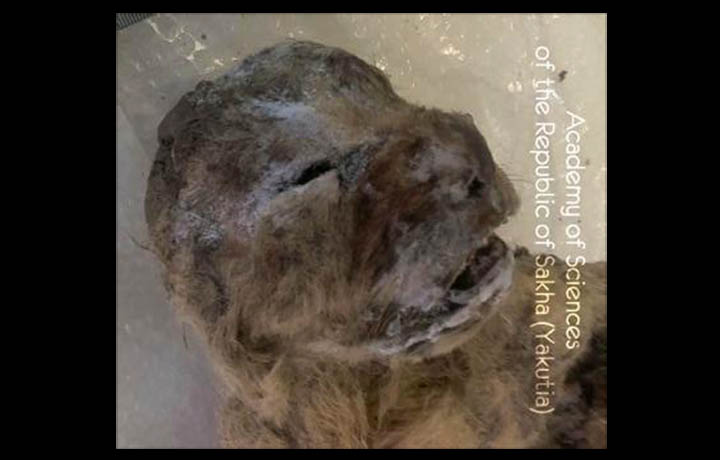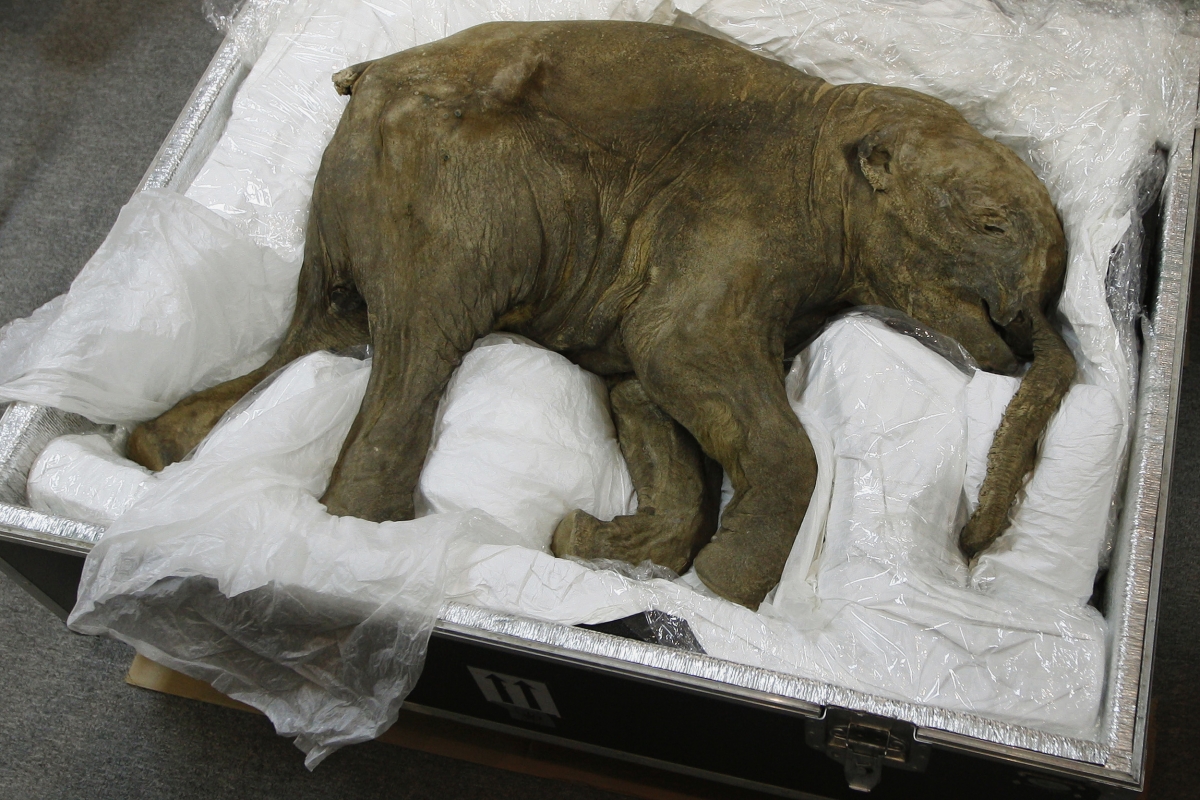http://news.nationalgeographic.com/2015/10/151028-cave-lion-frozen-permafrost-science/
One of the cubs:

The European cave lion was one of the largest lion subspecies (or an extremely close relative of the modern lion), although not believed to have been as large as the American cave lion. It has been depicted in a variety of ancient art, such as this cave painting in Chauvet Cave in France:

Russian researchers have announced the discovery of cave lion cubs found in the Ice Age permafrost of Yakutia, Siberia. The frozen cats are the first of their kind ever found in such a well-preserved state.
At least one of the cats, seen in a photo released with the announcement, is so delicately preserved that even its fur is intact. The [cub] has been frozen this way for at least 10,000 years, although the initial report notes that they could be even older.
As far as I know, there has never been a prehistoric cat found with this level of preservation, Des Moines University fossil felid expert Julie Meachen says, so this is truly an extraordinary find.
First described in 1810, cave lion remains have been found from Eurasia to North America. Up until now, however, the fossil record of this big cat was restricted to bones and tracks.
For the moment, the scientists studying the cubs are remaining tight-lipped about the discovery. Sakha Republic Academy of Science paleontologist Albert Protopopov declined to answer questions about the cats, awaiting a scheduled November 17 press conference to release the initial findings. The event will also highlight other spectacular finds made in the region, such as Yuka the woolly mammoth.
One of the cubs:

The European cave lion was one of the largest lion subspecies (or an extremely close relative of the modern lion), although not believed to have been as large as the American cave lion. It has been depicted in a variety of ancient art, such as this cave painting in Chauvet Cave in France:




